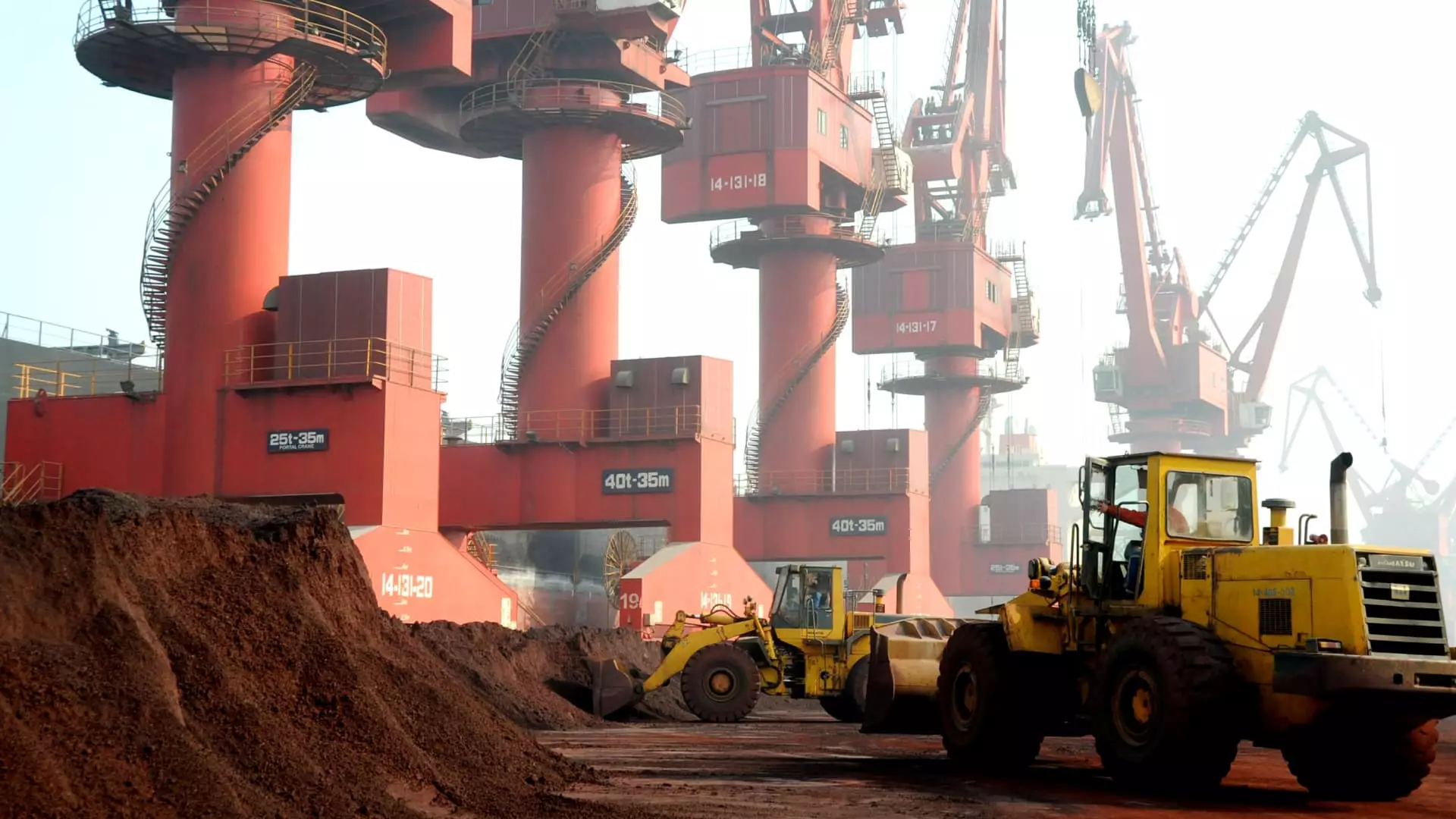The decision made by China to impose restrictions on the export of tungsten—a critical mineral essential for various industries—marks a significant shift in global mineral trade dynamics. This move not only demonstrates China’s growing assertiveness in managing its resources amid rising geopolitical tensions with the United States but also raises questions about the future of tungsten supply chains and the viability of alternative sources of production outside China.
For decades, China has operated as a dominant player in the tungsten market, effectively controlling around 80% of the supply chain. Analysts have traced this dominance back to a strategic decision to flood international markets with low-cost tungsten, a tactic that aimed to undercut competitors. This saturation of the market allowed Chinese businesses to consolidate their presence and impact market prices significantly. However, the geopolitical landscape has shifted, and as tensions between the U.S. and China escalate, the global demand for tungsten sourced outside of China is intensifying, particularly as the U.S. arms industry seeks to minimize dependency on Chinese minerals.
On December 1, China will implement new export regulations requiring businesses to procure licenses for exporting tungsten and other critical mineral products categorized as dual-use materials—those applicable for both military and civilian applications. This policy change comes at a time when alternative tungsten suppliers, particularly in the U.S. and South Korea, are preparing to enter or expand in the market. Christopher Ecclestone, a mining strategist, argues that while these restrictions may serve to stabilize China’s market position, they also create opportunities for other countries to vie for a share of the tungsten supply.
The Ministry of Commerce’s latest move should be viewed within a broader framework of economic nationalism, addressing both internal policies and external pressures. Notably, the U.S. Defense Department’s impending ban on contracting for China-mined tungsten starting in 2027 signifies a major effort to diversify sources of critical minerals, thus influencing market perceptions and shaping demand trends.
Interestingly, despite the announced restrictions, tungsten prices have exhibited minimal immediate volatility, illustrating a complex interplay between supply constraints and market expectations. Current benchmarks indicate that tungsten is trading around $335 per metric ton, with Ecclestone asserting that substantial profitability for mining operations requires prices to rise substantially—upwards of an additional $50.
As the U.S. increases its tariffs on Chinese tungsten, there appears to be a growing sentiment among American businesses that supports these duties, underlining perceived advantages for local manufacturing. The prospect of higher tariffs may bolster U.S. domestic initiatives to rejuvenate tungsten mining, as highlighted by Cullen Hendrix’s comments regarding potential mining projects becoming commercially viable.
In fact, one of the world’s significant tungsten mining operations is gearing up to reopen in South Korea. Almonty Industries’ Sangdong mine, which has lain dormant since 1994, is set to resume operations by mid-2025, potentially satisfying a substantial portion of South Korea’s tungsten demand, which is predominantly sourced from China. While this development holds promise for South Korea, it also suggests a greater collective movement towards reducing reliance on Chinese resources.
Looking towards the future, experts suggest that the U.S. will increasingly depend on strategic partnerships with allied nations for tungsten sourcing—termed “friendshoring.” As part of this strategy, Almonty has secured a long-term supply contract for 45% of the output from the Sangdong mine for the U.S. market. This partnership underscores the importance of international collaboration to address resource security amid global uncertainty.
As countries in regions like Canada, Kazakhstan, and Australia pursue their tungsten mining capabilities, the international landscape is likely to shift significantly. The U.S. Geological Survey has identified numerous potential mining sites across multiple states in the U.S., indicating a wealth of untapped resources that could become essential as domestic mining efforts intensify.
China’s new tungsten export regulations serve as a pivotal moment in a rapidly changing global mineral economy. As supply chains are redefined and the quest for resource independence gains momentum, companies in both the U.S. and allied nations will need to navigate this evolving landscape carefully. The competition for a sustainable and reliable supply of tungsten will not only reshape global market dynamics but will also play a crucial role in the future of various industries ranging from defense to technology. The attention now turns to how effectively these nations can mobilize their resources and capitalize on the opportunities presented by a reduction in Chinese export dominance.

